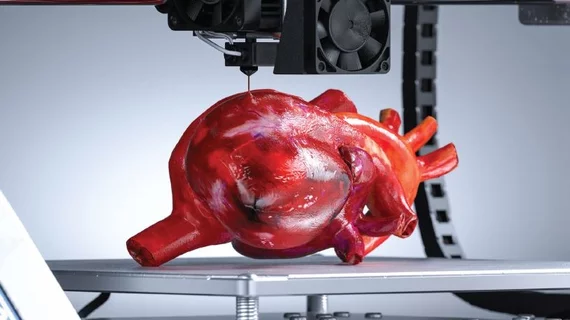Radiology practices must master the delivery and interpretation of cardiac CT and MRI as demand for such studies explodes, according to new research published Thursday.
Magnetic resonance imaging of the heart among Medicare beneficiaries leapt 75.5% between 2012-2017, while cardiovascular computed tomography increased 97.4%, St. Francis Hospital & Heart Center researchers reported. Yet, these two exams accounted for a small fraction of overall heart imaging, with ultrasound and nuclear medicine leading the way. Only 1% of radiologists delivered cardiovascular MRI during the study period and 3.2% of rads in CT, presenting an opportunity for growth.
“The data show with increasing utilization of cardiac CT and MRI, there is going to be an increasing need for radiologists to interpret them,” Andrew Bierhals, MD, MPH, an associate professor at Washington University’s Mallinckrodt Institute of Radiology, wrote in a corresponding editorial published Feb. 25. “That having been said, all radiologists need to be familiar with basic cardiac CT and MRI.”
For the original investigation, St. Francis Hospital’s James Goldfarb, PhD, retrospectively analyzed Medicare physician payments tallied over six years ending in 2017. He and co-author Jonathan Weber, MPH, discovered that 582 physicians provided cardiac MRI services in 2017 across 45 states. That represented a 17% uptick over the previous year and 85% since 2012. Another 1,645 physicians provided cardiovascular CT imaging across 49 states in 2017, a 14% increase from the previous year and 77% over 2012.
Medicare paid radiologists, cardiologists and other providers $16.2 million during the entire study period for 89,494 cardiac CT exams and doled out another $55.8 million for 318,608 cardiovascular CT scans. This compared to $5.9 billion for 5.3 million echocardiography scans and $4.2 billion for 13.7 million nuclear cardiology exams. By the last year of the study period, heart MRI had risen almost 76% up to 20,137 exams in 2017, while CT had swelled more than 97%, up to 76,192.
Goldfarb noted that technical advances coupled with encouraging clinical trials have spurred enthusiasm for routine clinical use of cardiovascular MRI and CT for a variety of indications. Plus, training for these modalities is more widely available than in the past, all adding to these swelling totals.
Editorialist Bierhals believes the numbers make it clear that radiologists—in academic medical centers and private practices alike—need to step up their game. He compared heart CT and MRI to the evolution of computed tomography for pulmonary embolism. Back in the 1990s, CT was not considered the reference standard for evaluating PE. But gradually the protocol became more accepted, training programs evolved, and radiologists took on a prominent role.
“It is necessary for general radiologists to interpret these studies because patients do not just have heart disease at academic centers—the majority of the care in the United States is provided in the community. The heart is not a magical organ despite what some in radiology seem to imply,” Bierhals wrote. “Understanding basic concepts of cardiac MRI and CT as well as cardiac physiology is not mystical,” he added later. “We were able to slay the dragon of the pulmonary embolism CT; this will be no different.”
You can read the rest of the study in Radiology: Cardiothoracic Imaging here, and the corresponding editorial here.

